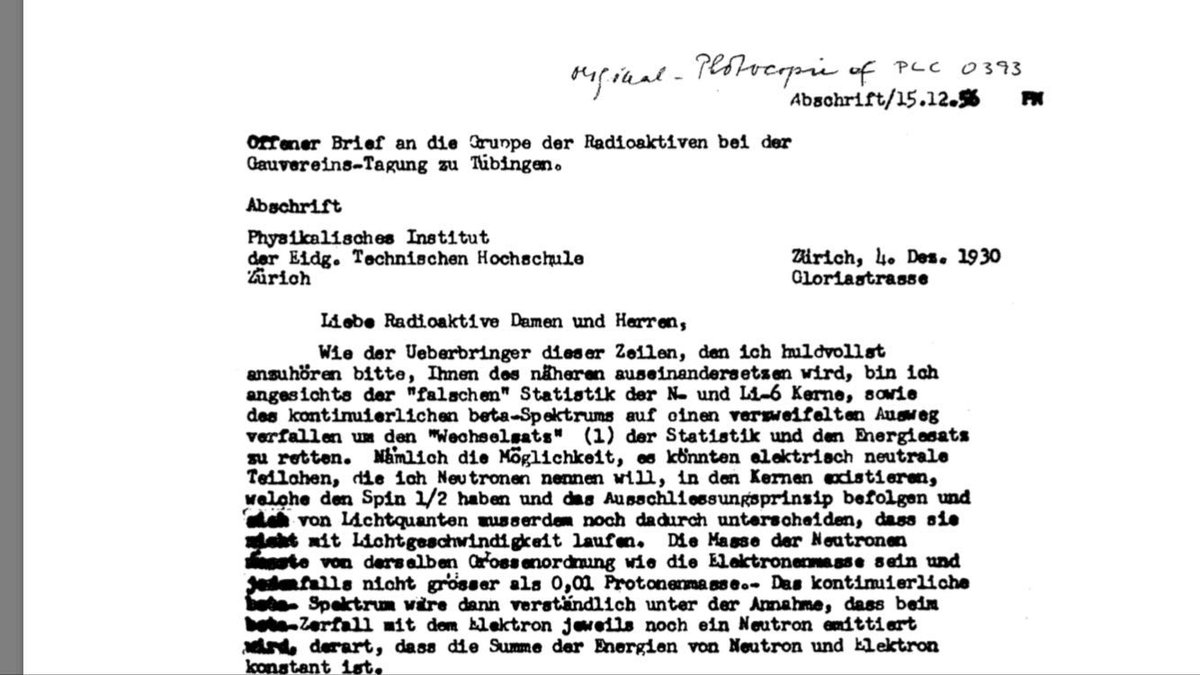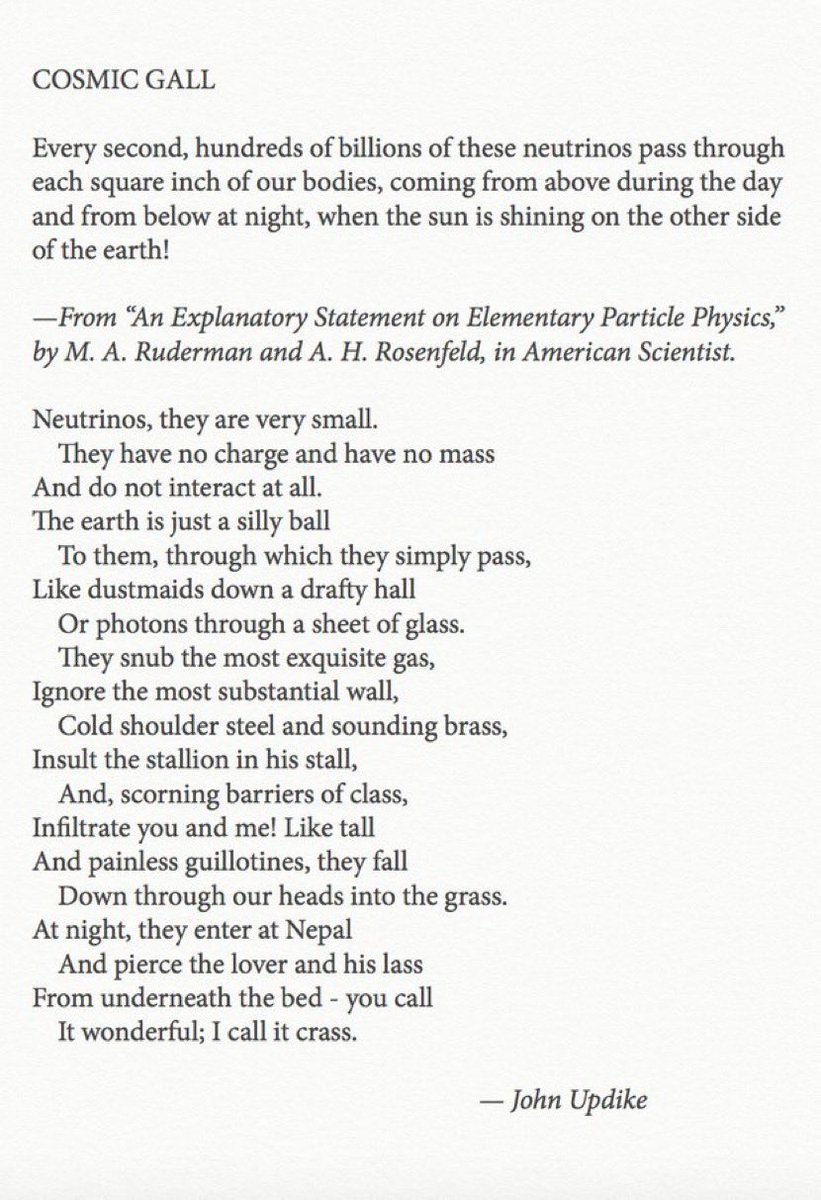“Dear Radioactive Ladies and Gentlemen”
Wolfgang Pauli sent a letter to a group of nuclear physicists #OTD in 1930, proposing a new and hard-to-detect particle to explain energy that went missing in some beta decays. He dubbed them “neutrons” but we now call them “neutrinos.”
Wolfgang Pauli sent a letter to a group of nuclear physicists #OTD in 1930, proposing a new and hard-to-detect particle to explain energy that went missing in some beta decays. He dubbed them “neutrons” but we now call them “neutrinos.”
You can see a scan of Pauli’s neutrino letter (along with a translation) here:
http://microboone-docdb.fnal.gov/cgi-bin/RetrieveFile?docid=953;filename=pauli%20letter1930.pdf
http://microboone-docdb.fnal.gov/cgi-bin/RetrieveFile?docid=953;filename=pauli%20letter1930.pdf
It was Edoardo Amaldi, in a conversation with Fermi, who coined the name “neutrino,” for “little neutral one.”
When Pauli realized how elusive his hypothetical particles must be, he said:
“I have done something very bad today by proposing a particle that cannot be detected; it is something no theorist should ever do.”
“I have done something very bad today by proposing a particle that cannot be detected; it is something no theorist should ever do.”
A few years ago I wrote about why Pauli proposed neutrinos, how they fit into Fermi’s theory of beta decay, and how they were eventually discovered in a beautiful experiment by Reines and Cowan. One of my favorite Twitter threads. https://twitter.com/mcnees/status/855180240351625216
Hopefully the thread gives an accessible explanation of a fact you often hear about neutrinos: They effortlessly pass through targets with lengths measured in light years.

 Read on Twitter
Read on Twitter



